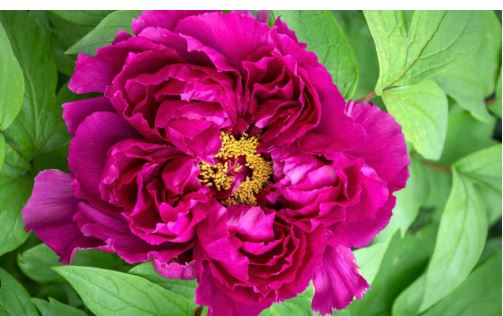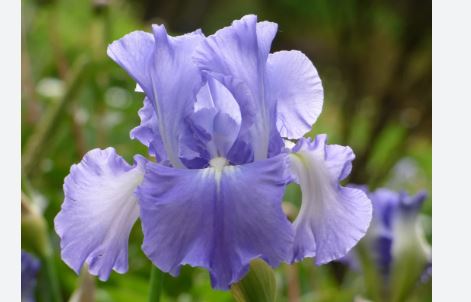
Flowers with large blooms, often exceeding 4 inches in diameter, create bold, eye-catching displays in gardens or indoor spaces. These vibrant blossoms, in colors like red, yellow, or white, paired with lush foliage, serve as focal points in landscapes. They thrive across climates, typically USDA zones 3–11, and are prized for their dramatic ornamental impact.
These flowers grow on diverse plants, including shrubs, perennials, or vines, preferring full sun to partial shade and well-drained, fertile soil. Their oversized blooms may require staking or pruning to support weight and encourage growth. Some are annuals, while others return yearly or need bulb storage in colder zones.
Blooming seasons vary, often peaking in summer, with some lasting year-round in warm climates. Large blooms attract pollinators like bees, butterflies, or hummingbirds, enhancing garden ecosystems. Their size makes them ideal for cut flowers, though some are toxic, requiring careful handling.
Certain large-bloomed flowers spread vigorously or demand pest control, while others tolerate drought or shade. Their adaptability suits borders, trellises, or containers, fitting urban or rural settings. Proper care, like deadheading or watering, ensures prolonged, vibrant displays throughout the season.
Ecologically, these flowers boost biodiversity by supporting pollinators and adding structural variety. Their bold presence enhances aesthetic gardens, from tropical to cottage styles, while container growth suits small spaces. With minimal maintenance, they deliver lasting beauty and visual grandeur.

Flowers With Large Blossoms
Sunflower
This annual sunflower produces massive yellow blooms, often 12–24 inches across, with brown centers and tall, sturdy green stems. Native to North America, it thrives in full sun and well-drained soil (zones 2–11). Blooming summer, it attracts bees and birds, perfect for back borders, needing staking for heavy heads.
Hibiscus
This tropical shrub bears vibrant red blooms, 6–8 inches wide, with glossy green leaves. Native to Asia, it grows in full sun and well-drained, fertile soil (zones 9–11). Blooming year-round in warm climates, it attracts hummingbirds, ideal for hedges, requiring frost protection and regular watering.
Peony
This peony cultivar produces semi-double, coral-pink blooms, 6–10 inches across, with lush green foliage. Native to Asia, it thrives in full sun to partial shade and rich soil (zones 3–8). Blooming late spring, it attracts bees, needs staking for large flowers, and suits borders.
Dinnerplate Dahlia
This dahlia cultivar has double, bright yellow blooms, 10–12 inches wide, on tall green stems. Native to Mexico, it grows in full sun and fertile soil (zones 8–11). Blooming summer to fall, it attracts butterflies, requires tuber storage in cold zones, and is perfect for cutting.
Giant Amaryllis
Giant amaryllis produces trumpet-shaped, red blooms, 8–10 inches across, on thick green stalks. Native to South America, it thrives in full sun to partial shade and well-drained soil (zones 8–10). Blooming winter indoors or spring outdoors, it attracts few pollinators, ideal for containers.
Oriental Lily
This lily cultivar bears fragrant, pink-white blooms with red spots, 6–10 inches wide, and glossy green leaves. Native to Asia, it grows in full sun to partial shade and well-drained soil (zones 4–9). Blooming summer, it attracts bees, suits beds, and needs bulb protection from rodents.
Magnolia
This evergreen tree produces creamy white, cup-shaped blooms, 8–12 inches across, with glossy green leaves. Native to North America, it thrives in full sun to partial shade and acidic soil (zones 7–9). Blooming spring to summer, it attracts beetles, ideal for lawns, needing space.
Giant Zinnia
This annual zinnia has double, vibrant blooms, 4–6 inches wide, in various colors with sturdy green stems. Native to Mexico, it thrives in full sun and fertile soil (zones 2–11). Blooming summer to fall, it attracts butterflies, perfect for borders, needing deadheading.
Hydrangea
This shrub produces mophead blooms, 6–10 inches across, in blue or pink, with broad green leaves. Native to Asia, it grows in partial shade and moist soil (zones 4–9). Blooming summer, it attracts bees, suits hedges, and needs pruning for repeat blooms.
Water Lily
This aquatic perennial bears pink, star-shaped blooms, 6–10 inches wide, floating on green lily pads. Native to North America, it thrives in full sun and still water (zones 4–11). Blooming summer, it attracts insects, perfect for ponds, requiring submerged pots.
Moonflower
This annual vine produces white, trumpet-shaped blooms, 6–8 inches wide, opening at night, with heart-shaped green leaves. Native to the Americas, it grows in full sun and well-drained soil (zones 2–11). Blooming summer to fall, it attracts moths, ideal for trellises, with toxic seeds.
Giant Allium
This perennial has spherical, purple blooms, 6–8 inches across, on tall, leafless green stems. Native to Central Asia, it grows in full sun and well-drained soil (zones 5–8). Blooming late spring, it attracts bees, suits borders, and needs bulb division periodically.
Titan Arum
This rare perennial produces a massive, maroon bloom (spadix with spathe), up to 10 feet wide, with a foul odor and large green leaves. Native to Sumatra, it thrives in partial shade and rich soil (zones 10–11). Blooming rarely, it attracts carrion flies, ideal for greenhouses, needing expert care.
Cannas
This perennial bears bright orange blooms, 4–6 inches wide, resembling orchids, with bold green and red leaves. Native to the Americas, it grows in full sun and moist soil (zones 7–11). Blooming summer to fall, it attracts hummingbirds, suits beds, needing rhizome storage in cold zones.
Bottlebrush
This shrub produces red, cylindrical blooms, 4–6 inches long, resembling brushes, with narrow green leaves. Native to Australia, it thrives in full sun and well-drained soil (zones 8–11). Blooming spring to summer, it attracts hummingbirds, ideal for hedges, tolerating drought.
Lenten Rose
This perennial bears double, rose-like blooms, 4–5 inches wide, in pink or white, with evergreen leaves. Native to Europe, it thrives in partial shade and moist soil (zones 4–9). Blooming late winter to spring, it attracts early bees, suits shade gardens, and is deer-resistant.
Climbing Rose
This climbing rose bears pale pink, double blooms, 4–5 inches wide, on thorny green canes. Native to hybrid origins, it thrives in full sun and well-drained soil (zones 5–9). Blooming summer, it attracts bees, ideal for trellises, needing pruning for vigor.
Hardy Water Lily
This aquatic perennial produces red, star-shaped blooms, 6–10 inches across, on floating green pads. Native to Europe, it thrives in full sun and still water (zones 3–11). Blooming summer, it attracts insects, perfect for ponds, requiring submerged containers.
Cape Lily
This perennial bulb bears deep pink, funnel-shaped blooms, 6–8 inches wide, with strap-like green leaves. Native to South Africa, it thrives in full sun to partial shade and moist soil (zones 7–10). Blooming summer, it attracts bees, ideal for borders, tolerating drought once established.
Tree Peony
This shrub peony produces semi-double, lemon-yellow blooms, 6–10 inches across, with woody stems and green foliage. Native to China, it thrives in full sun to partial shade and rich soil (zones 4–8). Blooming late spring, it attracts pollinators, needs minimal pruning, and suits focal points.
Angel’s Trumpet
This shrub produces pendant, yellow-orange, trumpet-shaped blooms, 10–12 inches long, with glossy green leaves. Native to South America, it thrives in full sun and rich soil (zones 9–11). Blooming summer to fall, it attracts moths, is toxic, and suits tropical gardens, needing frost protection.
Bearded Iris
This perennial iris produces ruffled, coral-pink blooms, 5–7 inches wide, with sword-like green leaves. Native to Europe, it thrives in full sun and well-drained soil (zones 3–9). Blooming late spring, it attracts bees, ideal for borders, requiring rhizome division every few years for vigor.
Foxglove
This biennial foxglove bears tubular, rose-pink blooms, 4–5 inches long, in tall spikes with green, rosette leaves. Native to Europe, it grows in partial shade and moist, well-drained soil (zones 4–8). Blooming early summer, it attracts hummingbirds, suits cottage gardens, but is toxic, needing careful placement.
Agapanthus
This perennial forms clusters of blue, bell-shaped blooms, 6–8 inches across, on tall green stems with strap-like leaves. Native to South Africa, it thrives in full sun and well-drained soil (zones 8–11). Blooming summer, it attracts bees, perfect for containers, needing frost protection in cooler climates.
Cardoon
This perennial produces thistle-like, purple-blue blooms, 4–6 inches wide, atop spiny, silver-green foliage. Native to the Mediterranean, it thrives in full sun and well-drained soil (zones 7–10). Blooming summer, it attracts butterflies, ideal for architectural gardens, with edible stalks if blanched.
Torch Lily
This perennial bears fiery red-orange, tubular blooms, 6–8 inches long, in spikes with grass-like green leaves. Native to South Africa, it grows in full sun and well-drained soil (zones 5–9). Blooming summer, it attracts hummingbirds, suits borders, and is drought-tolerant once established.